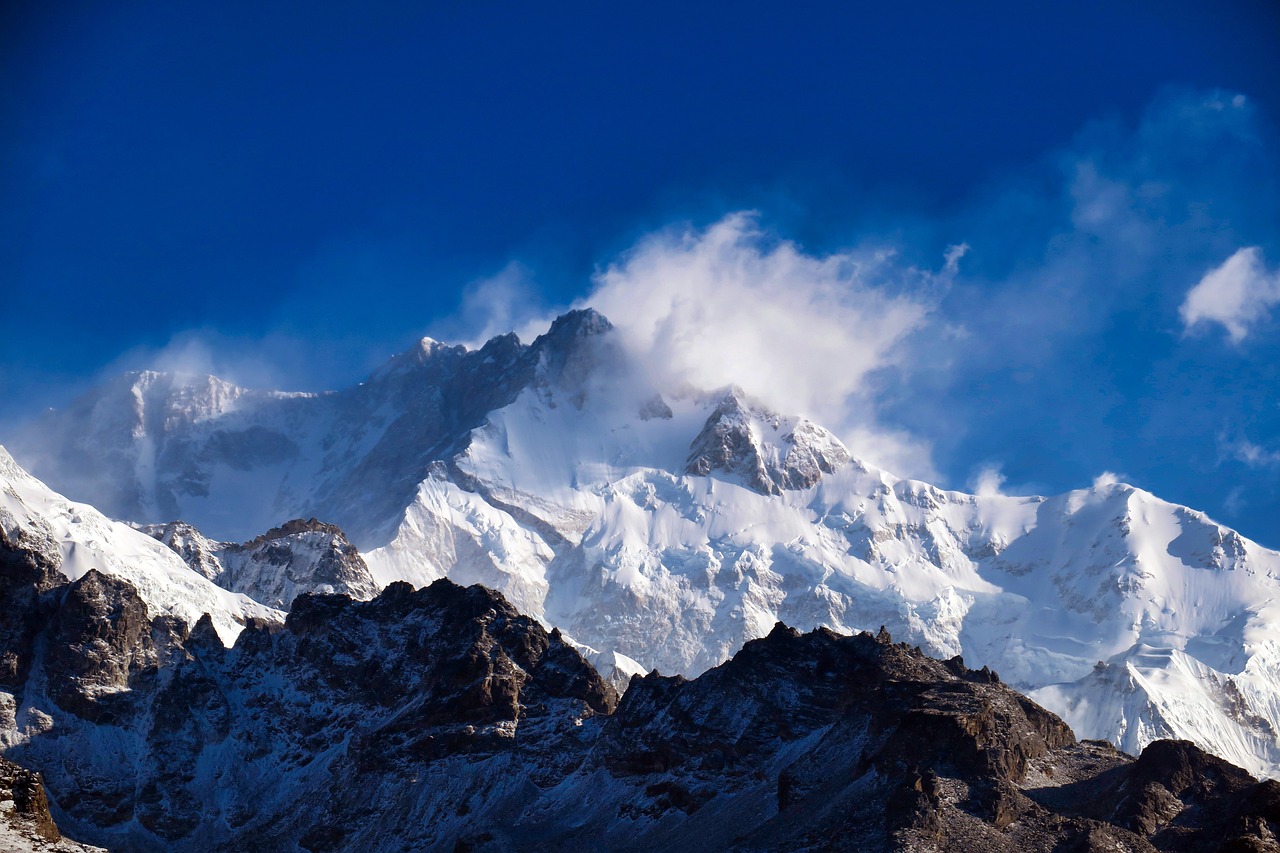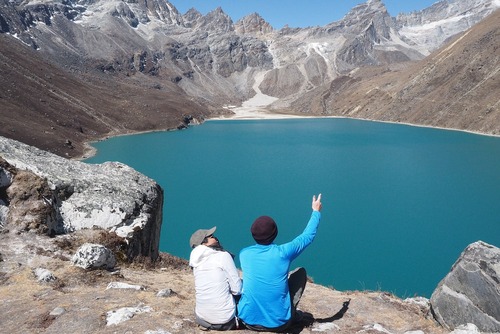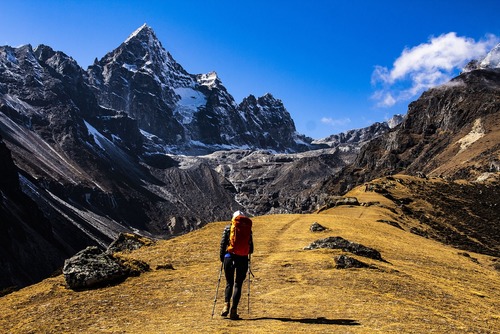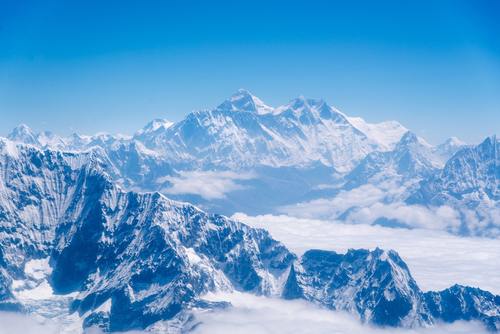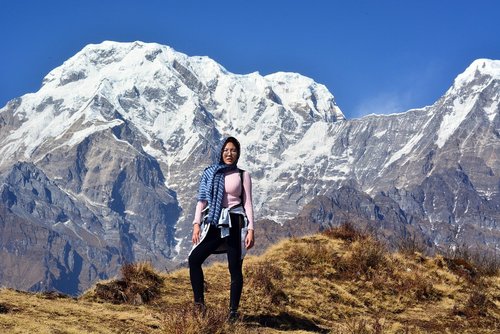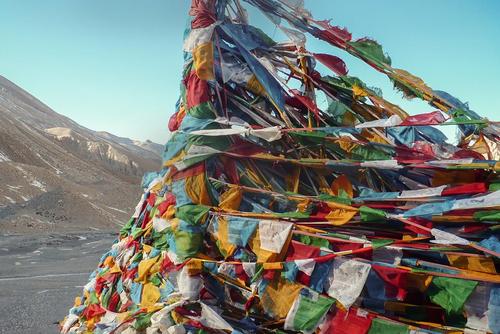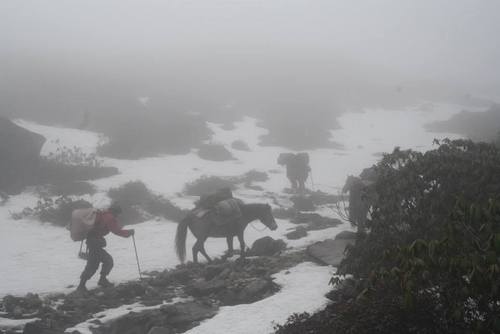With the most breath-taking views and exciting trails, you’ll be amazed and wonder how it has remained a lesser known trek compared to Everest Base Camp.
Travelers have often shown great complacency with Kanchenjunga trekking and it’s untouched beauty. It’s no doubt that any other treks in the Himalayas shall give the same level of delirium in the journey.
But, Kanchenjunga trekking remains an exception due to its natural profoundness, peace, and harmony it brings to us in various forms. And this is what they call it: there is magic in the air.
Trekking to Kanchenjunga Base Camp Nepal
The Kanchenjunga region of Nepal offers diverse trekking experiences for all travelers. Located in the eastern region of Nepal the arduous trail of Kanchenjunga turns into a perfect relish with the sights of colourful wildflowers, Himalayan blue sheep, and many spectacular views.
Embarking on this journey let alone not exploring the natural beauty, you will discover the local culture and insights into rural Nepali life. This remote trek provides the best encounters for any travellers seeking both adventure and spiritual enlightenment.
Along the trek, you’ll get to cross mini-wood bridges in small rivulets and pass through several high-altitude passes. The trek is not for complete beginners as it involves alpine challenges, difficult rugged terrain, and exhausting steep uphill and downhill climbs. But when you’ll be treated to the magic of sunsets, star-filled night skies, and warm local meals, you will see that this trek has all of it.
The voyage to Kanchenjunga Circuit amounts to the unbeatable landscapes, the caring nature of local people, and the rewarding memories you can make through proper trekking plans and preparations.
Check out our guide with everything you need to know before you go.
Nature, Sights and Scenery
The Kanchenjunga Base Camp trek gives the best sights of snow-capped mountains such as Mt. Jannu (7,710 meters), Yalung-Khang (8,505 meters); and Kanchenjunga (8,586 meters). You’ll encounter many glaciers, a turquoise lake called Yalung Lake (^5,000 meters) up to the South and North Base Camp of the third-highest peak in the world-Kanchenjunga.
Nature lovers willl find this trail boasting abundant floras and faunas. Rhododendrons, magnolias, and maples are the commonly found vegetation along with some medical herbs that can be used to treat high blood pressure. The Kanchenjunga Conservation Area is home to Himalayan Black Bears, Musk Deer, and Snow Leopards, perhaps you may get to spot them and other rare species during the trail.
The feeling is superfluous when you can witness traditional rituals and ceremonies of different ethnic communities. You’ll explore remote villages in the mountains and can observe the lifestyles of the natives. Rai, and Limbu people mainly inhabit the eastern part of Nepal.
Sherpa communities are commonly found in the high-altitude regions where you’ll be witnessing their attire, ornaments, and their family life. You may be startled by the peace and harmony among the villagers. Moreover, you’ll be advantaged by the kind and caring nature of the locals.
Amazing Vantage Points
The Kanchenjunga Base Camp Trek is a must to explore if you want to experience remoteness and a challenging trek that offers the pristine beauty of the eastern Himalayas.
The sense of accomplishment and the stunning views at the summit can be life-changing and unforgettable. The vantage points of the Kanchenjunga trek are some of the world’s awe-inspiring spots and are definitely worth a visit.
Popular vantage viewpoints and local villages on the Kanchenjunga trekking trail include:
1: A traditional Local Village Phale and Ghunda Village.
2: Khambachen Valley is one of the most beautiful Places.
3: Lhonak Valley Yak grazing Valley Close to Kanchenjunga.
4: Pang Peam is Known as Kanchenjunga North Base Camp.
5: Drohmo Ri viewpoint, From there, we can explore magnificent Kanchenjunga views and surrounding Himalayan Peaks.
6: The Three High Passes Selele La, Mirginla, and Sinelapcha Bhanjyang.
7: Probably the most beautiful and peaceful Campsite Tseram and Ramche during the whole Kanchenjunga Trekking route.
8: Oktang viewpoint, from this viewpoint spectacular Kanchenjunga south views, can be visible.
Getting to Kanchenjunga Base Camp
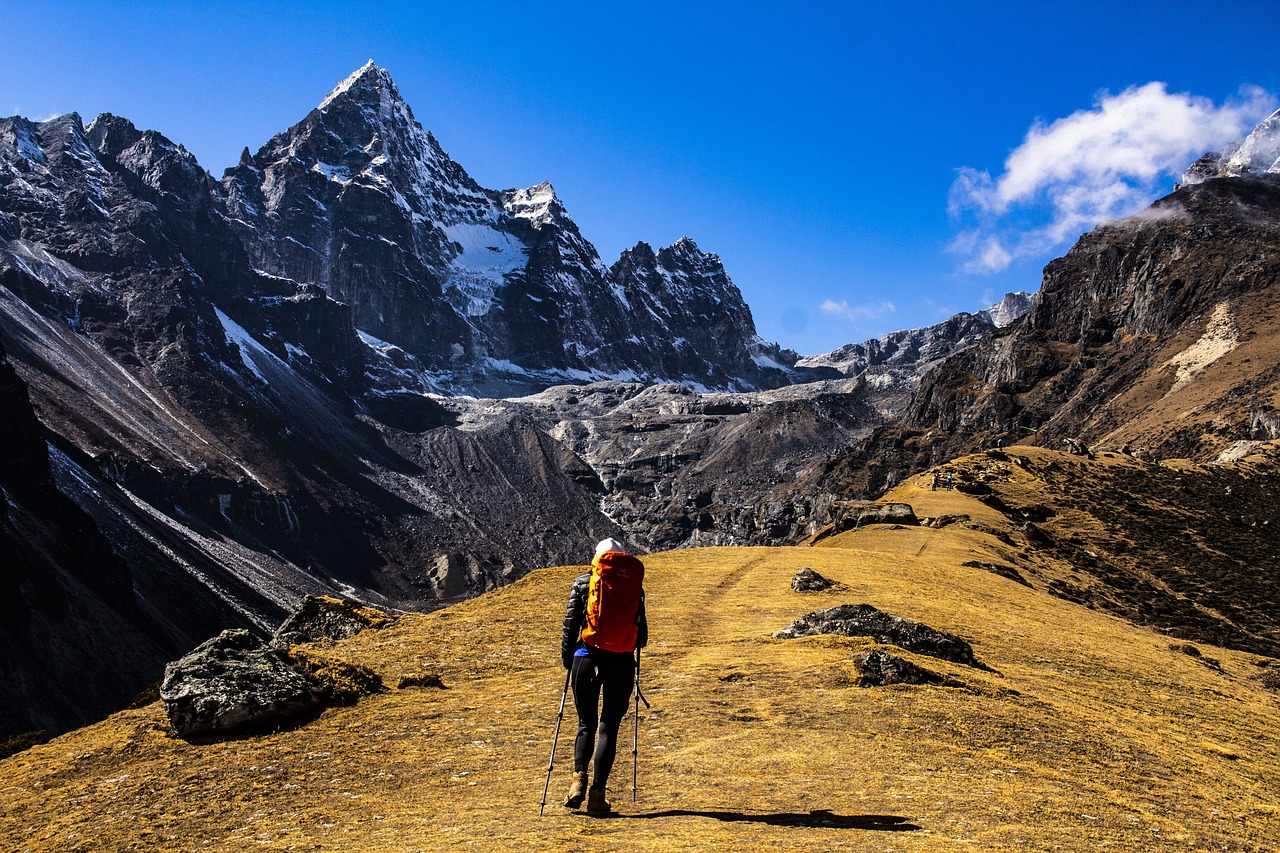
Kanchenjunga trek is not just a journey to the two base camps, North and South, on the world’s third-highest mountain. Trails up to the base camp and back to Taplejung offer a diverse range of experiences. You’ll find beautiful fields in their welcoming position once you start hiking from Taplejung.
You can’t forget to be grateful to the villagers of different ethnic communities that made your trek successful. A few phases of trekking involve passing through rhododendron forests and pasturelands, crossing suspension bridges, and climbing uphill and downhill. The trail also offers to experience beautiful lakes, waterfalls, and scenic sights of mountains.
Accommodations and Facilities
Most of us have been living in houses in cities incorporated with luxurious comforts. The best part of a trekking journey off the beaten path is spending a night in basic homes surrounded by local lifestyles. You shall be thankful even for the bare minimum facilities to give the most relaxing rest to your tired body. On the other hand, camping has a different level of excitement and unforgettable experience in the high-altitude regions.
Average visitors in the Kanchenjunga trek are less crowded than some of the other popular trekking routes in Nepal, such as Everest Base Camp and the Annapurna Circuit Trek. This is why the trek gives more remote and peaceful experiences to travelers. Due to the lower number of visitors in the past, travelers used to face limited accommodation problems and thus switched to camping options at some noted places.
But the increasing numbers of foreigners and domestic traversers in recent years have made the locals realize the scopes and prospects of opening teahouses and lodges. As a result, we can be quite sure about the availability of teahouses for accommodations and food both in the high and lowlands during the trail.
Despite being said that, it’s essential to pre-book rooms during the peak travel seasons due to limited accommodation in some of the remote sections of the trek. Sometimes, sharing rooms with another clan of trekkers becomes necessary at times of accommodation crisis.
There can be no access to the internet as we move towards the high-altitude zones. But, Solar Power electricity shall be available along the entire trail for recharging our devices. We mightn’t have to be bothered about shared bathrooms and lack of privacy in the teahouses because whatever is there shall be the best thing available for our staying service in the remote location.
Local Cuisine
You can taste the local cuisines and observe their native lifestyles as most of the teahouses in the region are operated by local families. The tea houses offer delicious Nepalese cuisines like dal bhat (Lentils and rice).
Most teahouses also offer some other foods such as momos, thukpa, omlet, toast with jams, tea, and coffee. Some local foods are available fresh and you can try them while trekking at Kanchenjunga including Yak Churpi, Yak Cheese, and Yak Milk.
Native Lifestyles in the Himalayas are quite interesting. Yak farming is one of the major sources of livelihood in the Himalayan regions of Nepal, so you can witness Yak grazing while roaming the entire trekking trail.
You’ll see local women weaving carpets and thangka with their traditional tools during their leisure time. Some knowledgeable locals would also tell interesting stories about past events in their village areas. They practice religious activities such as visiting Gompas, and ancient Buddhist monasteries.
How Hard is the Kanchenjunga Trek?
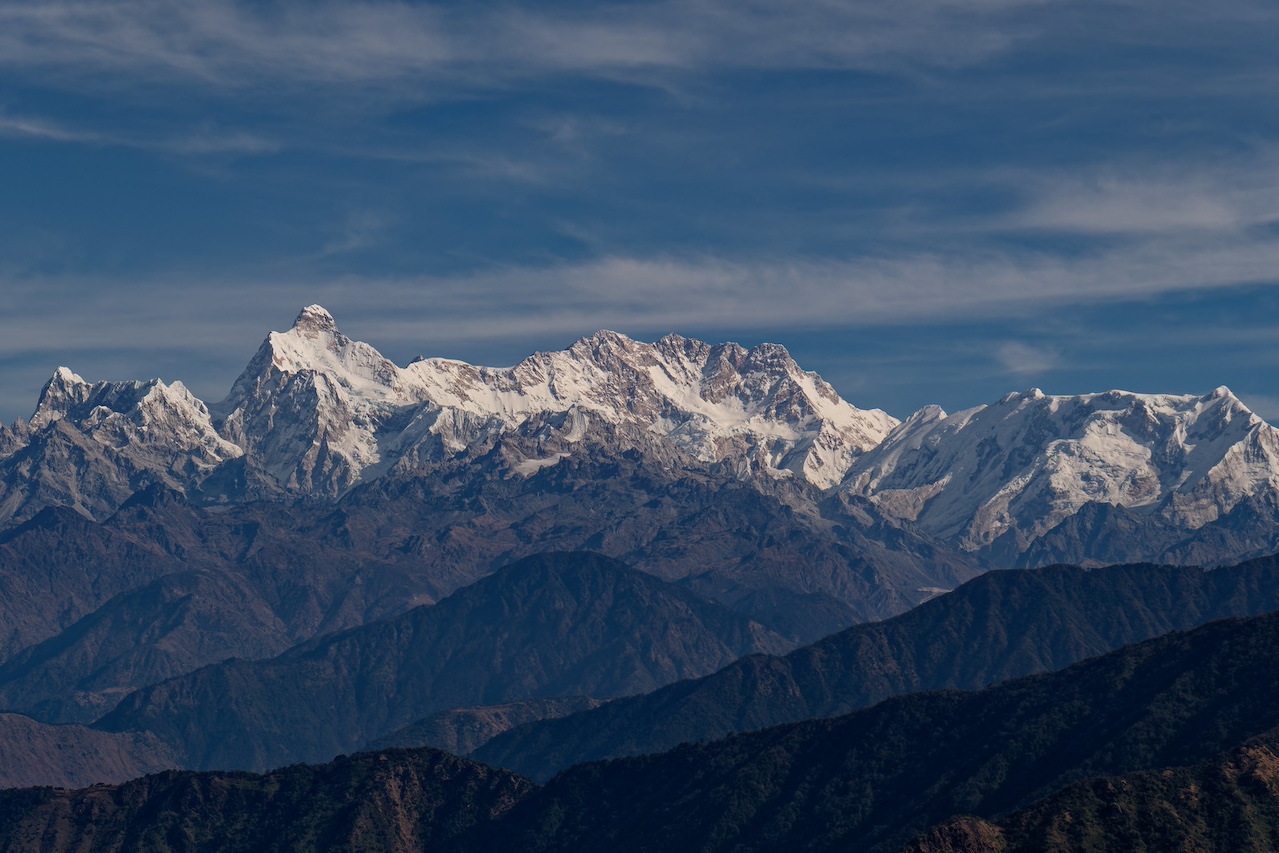
Many factors make the Kanchenjunga trek challenging. Some of these aren’t limited to the weather, rugged terrain, altitude sickness, extreme exhaustion, and getting highly tiresome.
Remote and isolated trekking trails, long-duration treks, limited accommodations, limited facilities, and special permit works are some other things that should be considered before embarking on this trek.
Usually, the trek is not recommended for beginners who are inexperienced in high-altitude trekking as the trek requires an extended period of alpine trekking. Even professional trekkers are challenged by several days of lengthy trekking, with some days involving up to 6-8 hours of hiking.
The trek involves crossing several passes and three high passes called Sele La Pass (4,290 meters), Mirgin La Pass (4,645 meters), and Sinelapcha Bhanjyang Pass 4646 meters which seem invigorating. But in actuality, they can be challenging to cross.
Kanchenjunga aesthetics are there to welcome us. Besides, it is important to note that the Kanchenjunga trek difficulty is not good to misconstrue. Successful trekking always depends on the preparations and precautions you take to remain fit, physically and mentally.
Altitude Sickness and Remedies
Altitude sickness is a risk when alpine trekking. The maximum altitude reached for this trip is 5,160 meters/16,929 feet at the Kanchenjunga Base Camp. The higher you climb, the more prone you are to developing common AMS symptoms; shortness of breath, nausea, vomiting, dizziness, headaches, hard sleeping, and loss of appetite.
For every trekker, it’s the priority rule to avoid altitude sickness by taking necessary measures such as acclimating your body properly, staying hydrated, and listening to your own body while trekking in high-altitude regions. But if you have pre-existing medical conditions, you may need extra precautions and medications to manage your health.
In case you develop AMS symptoms, tour companies will do whatever seems best for first-aid at some remote trekking sections where health posts aren’t located. If that’s a severe symptom of AMS, we may need you to descend to a lower altitude and get medical attention at the nearest health post.
Tour guides won't hesitate to take action immediately to prevent any conditions from worsening. Please note that not everyone gets altitude sickness, even people with pre-existing medical conditions such as cardiac and lung problems.
There are a few health posts along the Kanchenjunga trekking trail, which are staffed by trained medical professionals. Suketar Health Post and Ghunsa Health Post are available in around six and seven days of trekking from Taplejung. These health posts have basic medical facilities and also treat altitude sickness and common injuries like leg splints.
Duration of the Kanchenjunga Trek
The ideal time for trekking and a holiday to Nepal is around three to four weeks.
The Kanchenjunga circuit trek may be completed in a shorter time frame of a total of 21 days and may take as long as 26 days or more. The trek may take more or less time depending on the weather and trekking conditions. The monsoon season might add up days due to risks of landslides and flight cancellation into the region. Heavy snowfall during the winter season reasonably becomes the cause for an extended duration.
Spring and Autumn are popular seasons to travel that offer the best climate, weather, and views to complete the trek successfully. That’s why trekking the Kanchenjunga trail is a good use of a long-duration break - you can’t miss this opportunity.
Why You Should Choose the Kanchenjunga Trek?
There’s no chance the Kanchenjunga trek would fail to amaze you with its pristine beauty.
For any adventure lover, this trekking is a challenging opportunity to experience and explore remote Nepal. The crystal-clear waters of the Tamor River and the stunning Ghunsa Waterfall sketched in the green mountains are heart-melting experiences. There’s no way you feel away from the homely sense. Dipping into that Buddhist lifestyle in the heavenly surrounding makes no bound to please you.
The journey of this trek is an excellent opportunity to explore the enchanting villages and different communities that have been settling in the lap of Kanchenjunga. Throughout the trek, you’ll be witnessing a diverse range of vegetation, and many ethnic communities such as Rai, and Limbu in the lowland to Sherpa or Tibetan communities in the highland.
As this is a unique trekking destination for travelers around the world, the entire trail has accessibility to accommodations, food, water, electricity, porters, and some health posts. But, it’s unsure of the availability of the Internet and communication services in some areas.
What to Pack
Like any other alpine trekking, you will be recommended items like clothing, footwear, backpack, and types of equipment for making a successful Kanchenjunga trek. It’s important your bag is packed with essentials during the entire trail.
Trekkers are generally required to wear comfortable boots, sunscreen, sunglasses, hats, and raincoats, and carry trekking poles to experience comfortable trekking.
If you’re a novice high-altitude trekker, it’s important to take advice from experienced trekkers and search for reliable gear. In addition, you might want to buy purification tablets and portable water pouches as a way to promote sustainable trekking.
Best Month to Trek to Kanchenjunga Base Camp
Who doesn’t want the perfect weather for traveling? All of us deeply pray that the weather shows mercy in order to experience comfortable hiking and excellent views of the environment. Good weather, always make a handshake with cameras too.
Many trekkers had expressed their reliable seasons as Spring (March to May) and Autumn (September to November) on the Himalayan trails. These are the blooming seasons when the weather is clear, dry, and pleasant.
On the other hand, Summer (June to August) and Winter (December to February) create challenging situations like muddy and slippery trails for trekkers. That’s why it’s always best to explore the beautiful Kanchenjunga in the Spring and Autumn seasons.
You have a great chance to experience and see the surroundings in its excellent version during this time.
Is Monsoon Season Favourable for the Kanchenjunga Trek?
The lower trekking trails of Kanchenjunga are prone to leeches and landslides during the Monsoon season.
Despite bad weather in the off seasons and difficult trails, the surrounding is alluring by the magnificent beauties of the waterfalls, rivers, rivulets, green woods, rhododendron forests, lakes, snowfalls, and scenic views of the Himalayas.
But, the natural atmosphere is very lavish with blooming meadows and sights of snow-capped mountains when it’s Autumn and Spring seasons. These seasons bless the surroundings and let the environment be extra-ordinarily perfect for excellent photography.
Permit Costs for Kanchenjunga Trek
Trekkers are required to get at least two types of permits. Visit Himalaya Treks register our visit by getting permit cards from the authorities of the Nepal Government. Getting a Kanchenjunga Restricted Area Permit and Kanchenjunga Conservation Area Permit means we obtain valid entry into the region.
What Makes Himalaya Treks Unique?
Visit Hilalaya Treks was the first company to operate the Tea House trek on the Kanchenjunga Circuit Trek in early 2012. We have extensive experience and are capable of leading your journey to the Kanchenjunga Circuit, as the Kanchenjunga Circuit trek is unlike other treks in the Himalayas.
To truly enhance your experience on the journey, it's essential to travel alongside a local guide who possesses in-depth knowledge of the region and its inhabitants. A native guide can provide valuable insights into the culture, traditions, and history of the area, as well as help you navigate the landscape more effectively.
Their familiarity with the local terrain allows for a safer and more enriching trek, as they can uncover hidden gems and share personal stories that bring the surroundings to life. Engaging with someone who understands both the land and its people will significantly deepen your travel experience.
All of our policies regarding treks and tours in Nepal are transparent, with no hidden clauses or charges. We are a friendly and flexible team of travelers who love to explore and share experiences with like-minded individuals. With Three decades of expertise in the field, we are your ideal trekking partner for the Kanchenjunga Circuit Trek.
Plan a Trip to Nepal
As Terri Guillemets has said “You need special shoes for hiking and a bit of a special soul as well.''
It's obvious to experience thrust and thrill over the off-beat paths of Kanchenjunga. But, the sense of accomplishment is still a tell-tale story. It doesn’t matter whether you are a professional trekker or a beginner, the Kanchenjunga trek could be accomplished with a passionate fever.
With a mixture of different components like a thrill, excitement, breath-taking views, remote beauties, and cultural harmonies, you may experience Kanchenjunga, a wonderful heaven on Earth. And you may say the Kanchenjunga trekking holidays are really magical.

